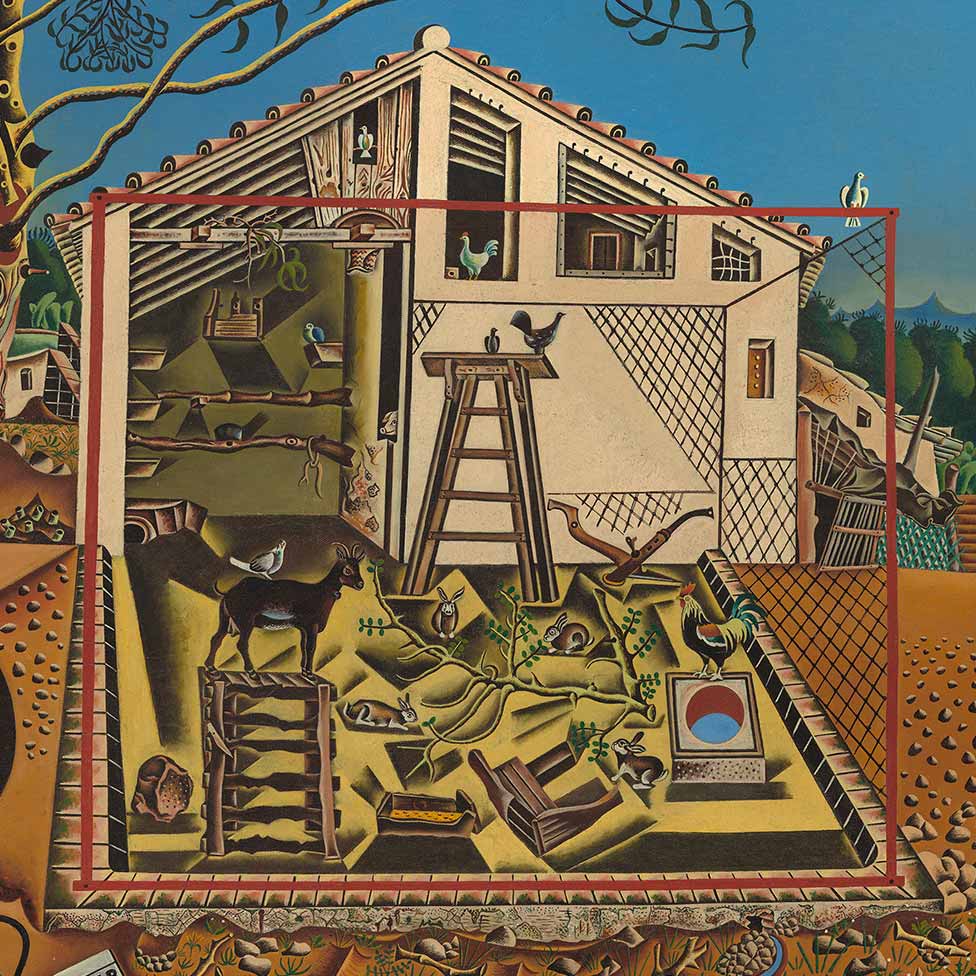


Courage consists sometimes of staying close to nature, which could not care less about our disasters". Though he was capable of making propaganda images for the Catalan and republican causes, this sense of absolute individual liberty was as much about a sense of wonder at the world you could find it, he believed, "wherever you see the sun, a blade of grass, the spirals of the dragonfly. The word "freedom has meaning for me," he said, "and I will defend it at any cost." if the aim is to impose their demands on us". In a 1936 interview, with the Spanish civil war a looming reality, he spoke of the need to "resist all societies. The ladder in that borrowed exhibition title had long been for him an emergency exit to the safe house of his imagination. The label stuck for a long time but this exhibition should go a long way to revealing how hard-won Miro's apparent playfulness was. André Breton, the surrealist, once referred to Miró, for good and bad, as a case of "arrested development", a childlike artist.
#The farm miro full
When he eventually fled with his wife and daughter on the last train out of Paris for Spain, the paintings were rolled under his arm.Īs the exhibition will make clear, Miró's instinct for political engagement, though heartfelt and full of risk, often lay in these gestures of withdrawal, of self-defence.
#The farm miro series
The series of paintings dwelt on his profound internal sense of connections between things, an entirely singular private universe that he called the Constellations. He was living in Normandy at that time and had begun the works as a kind of personal defence against what he knew to be the horrors to come. The title of the show, Joan Miró: The Ladder of Escape, comes from a painting, one of a series, that Miró began in 1939 as the Nazi forces were advancing into France. Marko Daniel, the co-curator of the exhibition, which will bring together more than 150 works in collaboration with the Miró Foundation in Barcelona, hopes that it will be "a perspective not just on Miró but on the turbulence of the 20th century, the way an artist's life might be shaped by proximity to these great political upheavals". The Tate show will concentrate on three periods of Miro's constantly reimagined career: his formative years in Catalonia his exile in Paris in the years of the Spanish civil war and the outbreak of the second world war and his enthusiasm for the radicalism of the 60s, when he was approaching the late period of his work. But once he had escaped, he held on to his identity as a Catalan, as a freedom fighter, all the more devoutly and from it developed an intimate visual language, which sustained him all of his working life. To begin with, he identified this freedom with internationalism he longed to be in Paris. He came of age with the Catalan independence movement, and shared its deep-rooted sense of the possibilities of liberty. He was the son of a blacksmith and jeweller who lived on the harbourside in Barcelona.

Politics was for Miró, however, unavoidable, an accident of birth.


 0 kommentar(er)
0 kommentar(er)
